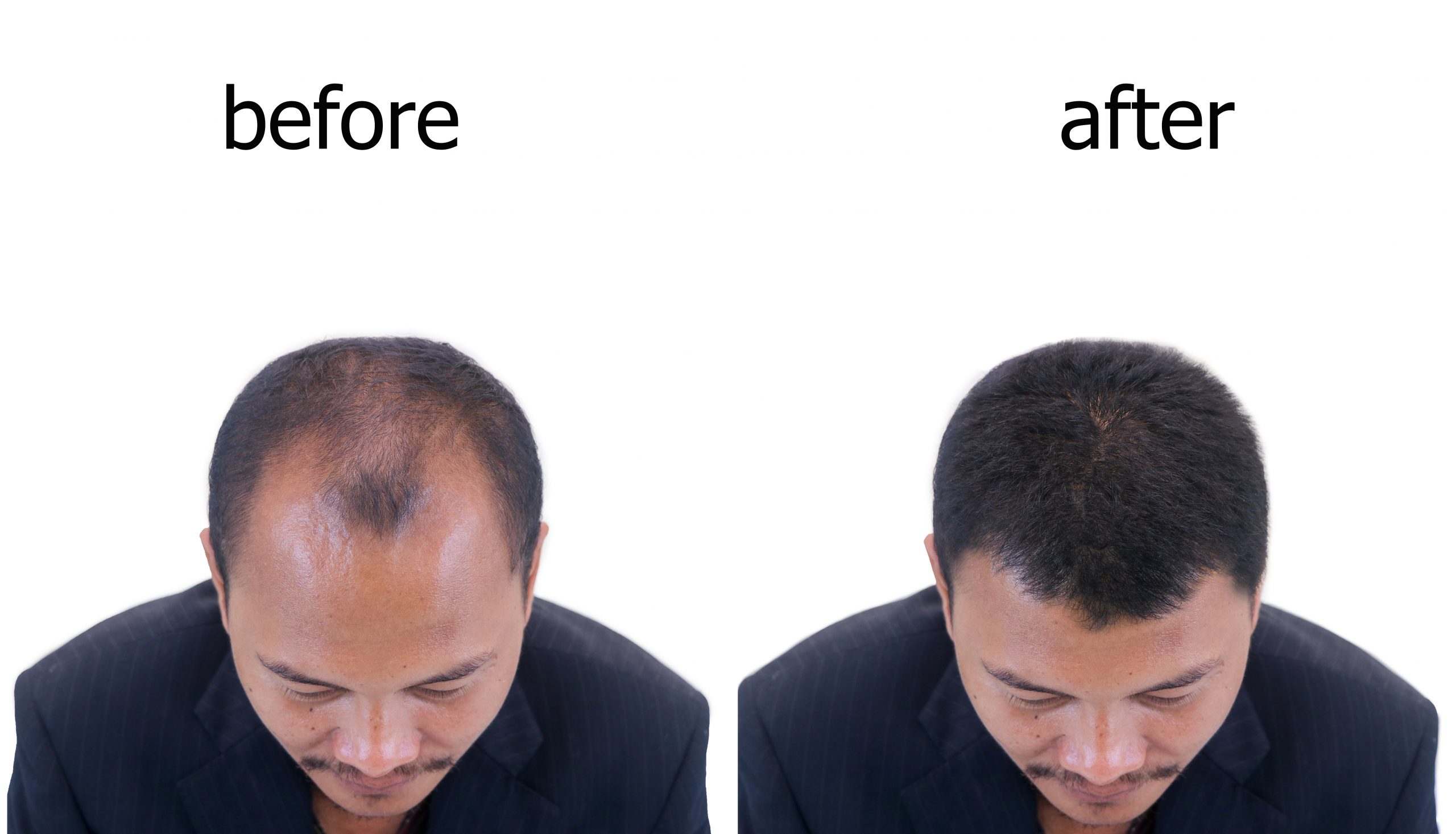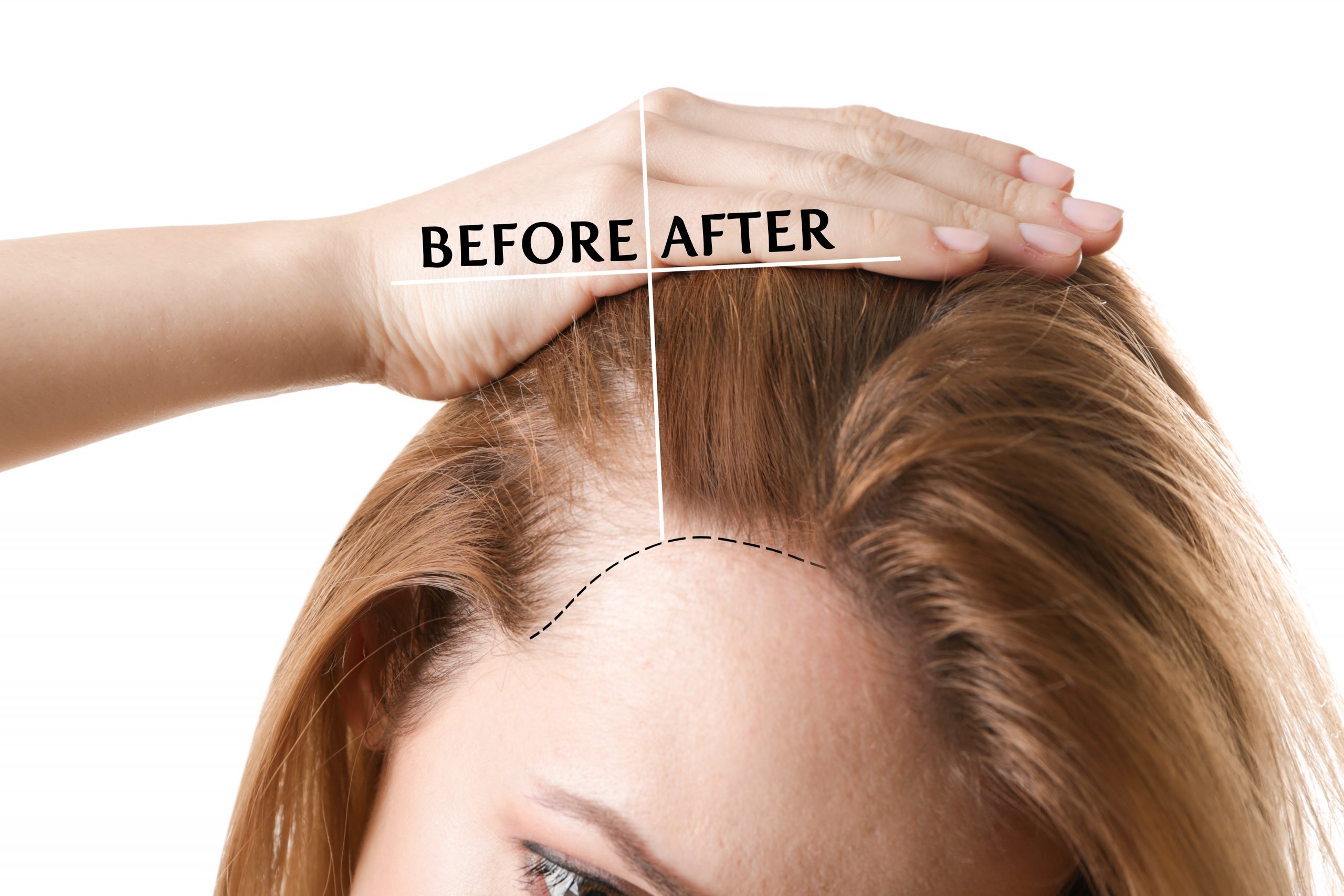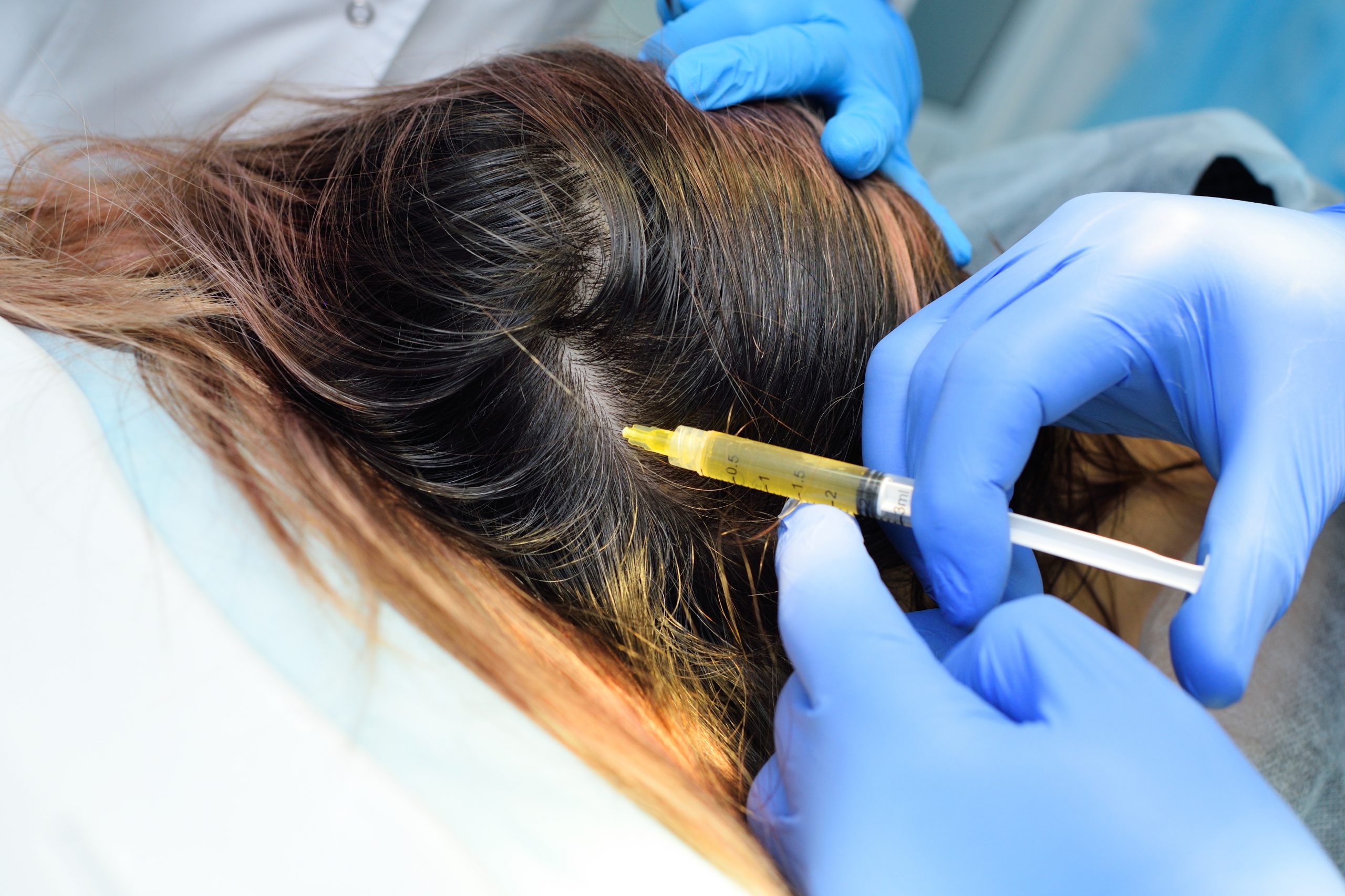Non-Surgical Hair Restoration
At The Functional Medicine Center, we have spent countless hours researching and implementing our Non-Surgical Hair Restoration technique. It’s our sincere hope that we can stop hair loss and restore hair growth for you. We use a combination of products that do not contain any synthetic drugs or hormones in our technique. Many hair restoration clinics use platelet rich plasma (PRP) in their process. PRP alone yields great results in the research we’ve outlined below, but is actually just one of the base components we use at The Functional Medicine Center on your journey towards spectacular results! We use PRP plus so much more to make our technique stand out amongst the crowd. When we perform our Non-Surgical Hair Restoration, we will see you monthly for 3 visits to get optimal improvement.
We never use minoxidil or propecia during our process. To us, the risks of the well documented side effects are not worth the benefits, especially when current research has concluded that platelets rich plasma is more effective in the treatment of alopecia areata than topical minoxidil 5%.(14)
Everything we do in patient care at The Funcitonal Medicine Center is grounded in science. There’s extensive research outlining the theory about how our Non-Surgical Hair Restoration works at the cellular and molecular level.
PRP treatments involve collecting a small amount of your blood and spinning it in a centrifuge to separate the platelets from the red cells. You can read more about our technique for PRP (often including ozone gas) here. Injecting into an area of thinning hair can stimulate hair regeneration in many people.
“The clinical application of platelet-rich plasma (PRP) is based on the increase in the concentration of growth factors that are released from (the) alpha-granule (simply the container within the blood that holds growth factors) of the concentrated platelets and in the secretion of proteins which are able to capitalize on the healing process at the cellular level. It has been invented to restore natural beauty by starting the natural rejuvenation process of the skin and aiming to make it function as a younger one and to keep the skin youthful and maintain it. Besides that, it has also emerged to include hairs as a new injectable procedure to enable stimulating hair growth locally and topically; preventing its fall; improving hair shaft, hair stem, and its caliber; increasing its shine, vitality, and pliability; and declining hair splitting and breakage. Thus, youth is in your blood as it has a magical power imposed in the platelet factors.” (1)
Many of our patients wonder why they shouldn’t seek a surgical approach or use drugs.
“Despite available therapeutic options, the search for new, more effective hair restoration treatment is constant. Platelet-rich plasma could be the more effective treatment. . . Growth factors in platelets’ granules of PRP bind in the bulge area of hair follicle, promoting hair growth making PRP a potential useful therapeutic tool for alopecias, without major adverse effects.” (2)
“(In numerous studies) Overall positive clinical response to the use of PRP in androgenetic and alopecia areata patients is observed. The effects on hair density, count, and thickness were demonstrated through multiple clinical trials. . . “ (3)
In October 2017, it was concluded that PRP promotes hair growth and increases the number of hair follicles by inducing angiogenesis.(6) The Functional Medicine Center’s Non-Surgical Hair Restoration can actually cause the growth of new blood supply to hair follicles.
Earlier research in the Journal of Dermatologic Surgery found PRP also causes angiogenesis but also encourages hair follicles to enter and extend the duration of the anagen phase (the most active growth portion of the hair growth cycle).(7)
In Barcelona, six years of clinical experience was documented and published regarding PRP for androgenetic alopecia. Men with with androgenetic alopecia had a success rate of 71.4% (more hair) with 21.4% staying the same (stopped further hair loss). Women had success rate of 73.4% with 16.3% staying the same.(9)



